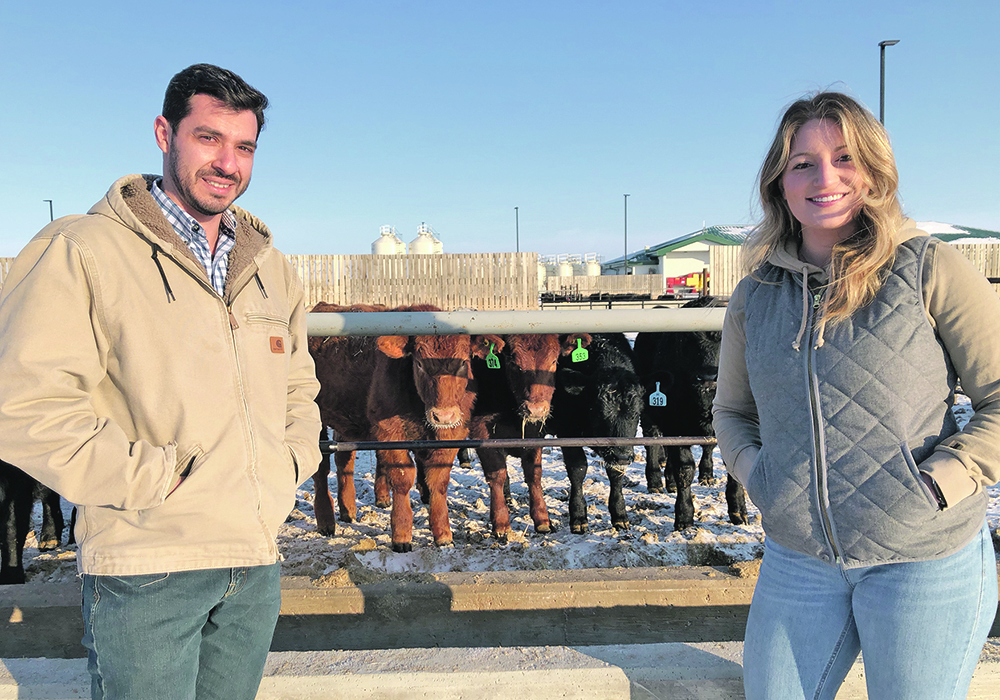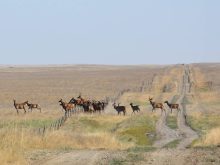Researchers are working to answer a longstanding question: how can cattle producers manage ergot contamination in feedgrains?
Ergot is a fungal disease that can affect cereal grains and produce a cocktail of toxins known as ergot alkaloids. Crops contaminated with ergot are typically diverted to animal feed markets, which can pose a significant risk to cattle.
“Ergot alkaloids are quite toxic to cattle,” says Gabriel Ribeiro, assistant professor and Saskatchewan Beef Industry Chair at the University of Saskatchewan. “Even small quantities in the feed can impact their health and performance.”
Read Also

Crop quality looks good this year across Prairies
Crop quality looks real good this year, with the exception of durum.
The Canadian Food Inspection Agency has published recommended guidelines for feeding ergot-contaminated feed to cattle. However, these maximum tolerances are being called into question.
With funding from the Beef Cattle Research Council, Ribeiro and Jenna Sarich, a graduate student from the U of S, aim to better define maximum tolerances for ergot alkaloids in feedlot diets. This would offer cattle producers new strategies for managing ergot contaminants in their feed.
“The beef industry is looking to re-evaluate CFIA maximum ergot tolerances,” says Ribeiro. “Our research will give some indication of how high we could feed ergot-contaminated grains to cattle and whether there is a need to reduce current guideline levels.”
According to Sarich, “the upper limit that the CFIA recommends is three parts per million, but there really hasn’t been any research on these levels in the past.”
That is, until now.
Through their ongoing feedlot trial at the Livestock Forage Centre of Excellence in Clavet, Sask., Ribeiro and Sarich are putting the CFIA guidelines to the test.
In trials, 240 steers are being fed one of four test diets, each with increasing levels of total ergot alkaloids, up to the current recommended maximum. Throughout, Ribeiro and Sarich will monitor animal health, welfare, and production performance to pinpoint when ergot toxins start to negatively impact the cattle.
The next phase of their research aims to help generate strategies for reducing the impact of these toxins. More specifically, Ribeiro and Sarich plan to focus on the roles that rumen microbes and speciality feed additives can play in reducing ergot toxicity.
“There are some studies that suggest that rumen microbes could metabolize some of the ergot alkaloids,” says Ribeiro, “so we’re trying to see if that can really happen.”
At the same time, the researchers will be evaluating the effects of a mycotoxin binder — a feed additive designed to prevent toxins from being absorbed in an animal’s gut — to see if it can help reduce ergot toxicity in the rumen of cattle.
“We’re testing a mycotoxin binder to see if it can prevent any negative effects the ergot alkaloids may have on rumen fermentation,” says Ribeiro.
To do this, he and Sarich are using a unique piece of technology called a RUSITEC. Simply put, the RUSITEC is an artificial rumen — a counter-top device that mimics typical fermentation conditions found within the first chamber of a steer’s forestomach.
“With the RUSITEC, we’re able to feed higher toxin levels than we would an animal,” says Sarich.
This allows the researchers to safely push the boundaries when testing feed toxins, and to observe any interactions between the ergot alkaloids, the microbes, and the feed additive.
Finally, Ribeiro and Sarich will complete a two-year survey of ergot contaminated cereal grain samples from across Western Canada. This will paint a clearer picture of what types of toxins this region is being challenged with and what locations might be considered high risk.
“With the survey, we’re hoping we can characterize the ergot alkaloid profile based on location and type of crop,” says Sarich.
Ergot is not a new disease, but the timing of this research is optimal.
Changes in environmental conditions and agronomic practices are believed to contribute to the growing number of ergot disease outbreaks within Western Canada. This upward trend means cattle producers could begin seeing more ergot in their feedgrains.
“The contamination of cereal grains with ergot alkaloids has been increasing over the years,” says Ribeiro. “Those grains get downgraded to animal feed and most often end up in cattle diets.”
The consequences of ergot toxicity in cattle can be devastating. In mild cases, animals may show reduced feed intake and growth.
In more severe cases, cattle could experience lameness, loss of ears and tails, abortions, and even death. In the U.S., the beef industry has estimated more than US $600 million in annual losses due to ergot related production losses.
“As researchers, we need to be open to the needs of the industry,” says Ribeiro. “We saw there was a need to understand the impact of ergot alkaloids in beef cattle, and through this work we can provide better feeding management practices to improve production and health of Canadian feedlot cattle.”

















